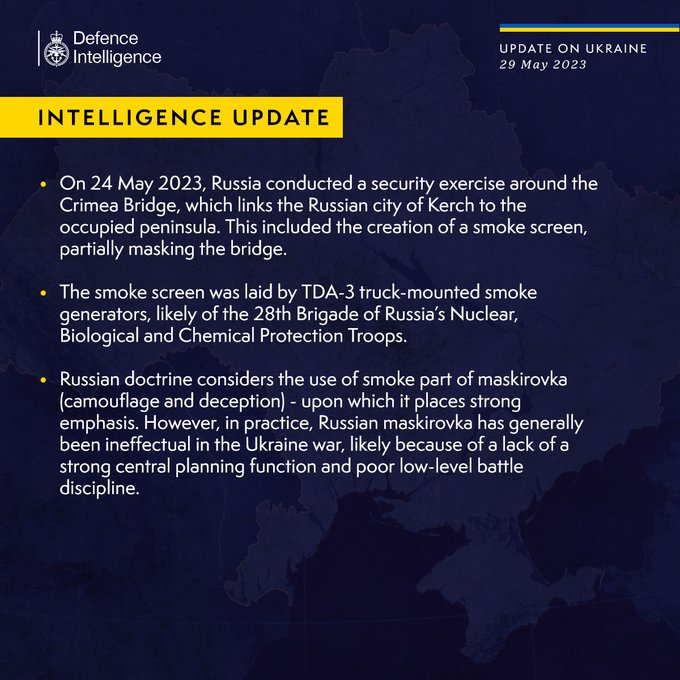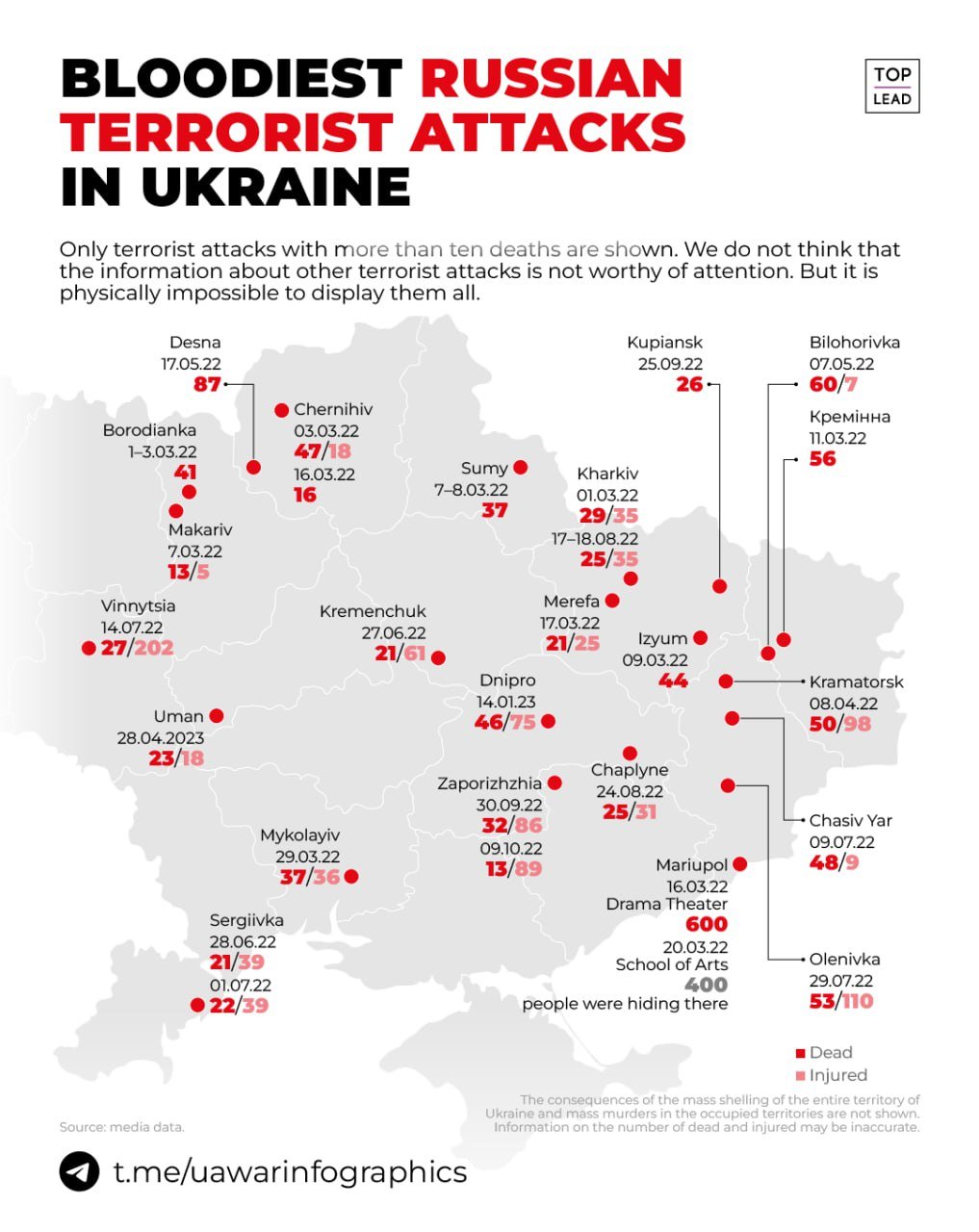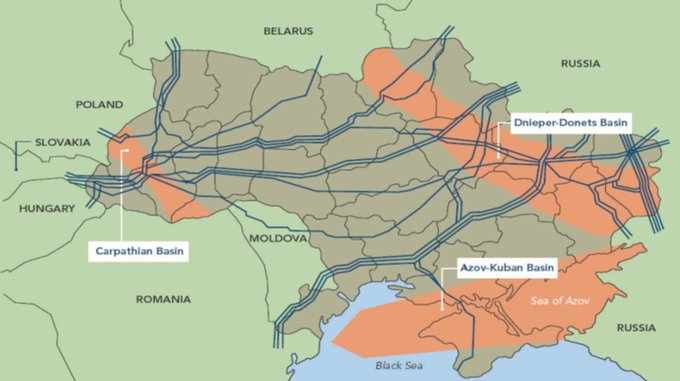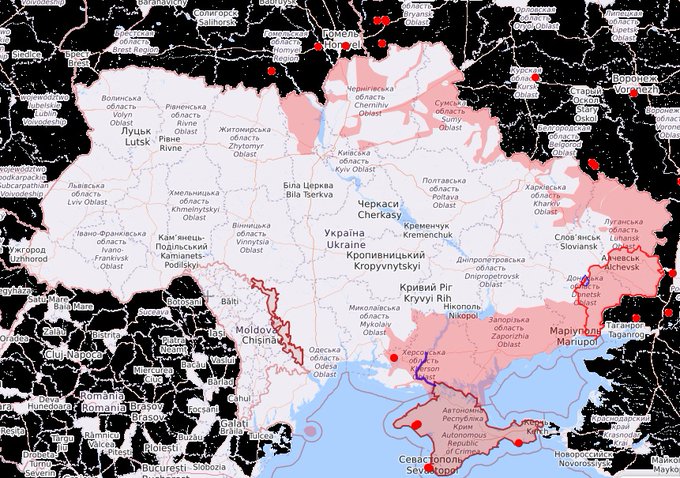Russian forces conducted another series of strikes against Ukraine with cruise missiles and Iranian-made drones overnight on May 28 to 29 and during the day on May 29.


-
Eleven Russian missiles aimed at Kyiv were shot down by the Ukrainian air defence on Monday morning. One person was hospitalised as a result of the attacks. The local authority reported that the roof of a two-story building caught fire in the district as a result of falling debris, but that the fire was contained.
-
Ukrainian President Volodymyr Zelenskiy said on Monday that using US-provided Patriot anti-missile systems ensured a 100% interception rate and would play a role in pushing forward against Russia’s invasion. “When Patriots in the hands of Ukrainians ensure a 100% interception rate of any Russian missile, terror will be defeated,” Zelenskiy said in his nightly video address.
-
Any peace settlement acceptable to Ukraine would include a demilitarised zone extending between 100km and 120km into Russia, the adviser to the head of the office of Ukraine’s president, Mykhailo Podolyak, has suggested. The key topic of the postwar settlement should be the establishment of safeguards to prevent a recurrence of aggression in the future, he said.
-
US president Joe Biden said that in a call on Monday, Turkish President Tayyip Erdogan repeated Ankara’s desire to buy F-16 fighter jets from the United States, while Biden responded that Washington was keen to see Ankara drop its objection to Sweden’s joining Nato. The exchange took place when Biden called Erdogan to congratulate him on his victory in Turkey’s presidential election on Sunday.
-
Two people were killed and eight were wounded in a Russian attack on the city of Toretsk on Monday morning, Pavlo Kyrylenko, the governor of the Donetsk region, said. Kyrylenko said Russian forces had used high-explosive aerial bombs in the attack at about 11:30 am local time which damaged a gas station and a multi-storey building in the city.
-
Russia’s interior ministry has put US senator Lindsey Graham on a wanted list after the Investigative Committee said it was opening a criminal probe into his comments on a Ukrainian state video. In an edited video released by the Ukrainian president’s office of Graham’s meeting with Zelenskiy in Kyiv on Friday, Graham was shown saying “the Russians are dying” and then saying US support was the “best money we’ve ever spent”. Russia said Graham should say publicly if he believes his words were taken out of context in the video edit.
-
Polish president, Andrzej Duda, said that he would sign a bill to allow a panel to investigate whether the opposition party Civic Platform (PO) allowed the country to be unduly influenced by Russia and as a result become too dependent on its fuel when it was in power. The PO party rejects the claims and says the law is designed to destroy support for the party in the lead up to the elections being held at the end of the year.
-
The Danish prime minister, Mette Frederiksen, said that her government planned to increase spending on military aid to Ukraine by $2.6bn over this year and next year. Earlier this year, Denmark set up a $1b fund for military, civilian and business aid to Ukraine. Danmarks Radio, the Danish public-service broadcaster, reported that the new funds were earmarked for military aid.
www.theguardian.com/…
- Russian forces conducted another series of strikes against Ukraine with cruise missiles and Iranian-made drones overnight on May 28 to 29 and during the day on May 29.
- Russia deployed more S-400 air defense systems (probably at least a battery) to Belarus on May 28.
- Former Russian Deputy Minister of Defense for Logistics Colonel General Mikhail Mizintsev confirmed that he is now operating as deputy commander of the Wagner Group.
- Wagner Group financier Yevgeny Prigozhin denied former Russian officer Igor Girkin’s May 27 accusation that Prigozhin could stage a military coup against the Kremlin by arguing that Wagner lacks the personnel needed to start a coup.
- Chinese Foreign Ministry Spokesperson Mao Ning denied a Wall Street Journal report that Chinese Special Representative for Eurasian Affairs Li Hui urged European officials to end the conflict in Ukraine before it escalates.
- Russian authorities continue to forcefully integrate dioceses of the Ukrainian Orthodox Church of the Moscow Patriarchate (UOC MP) in occupied Zaporizhia Oblast into the Russian Orthodox Church (ROC) demonstrating the integral connection of the ROC with the Russian state.
- Russian forces conducted limited ground attacks northeast of Kupyansk and along the Svatove-Kreminna line.
- The tempo of Russian offensive operations in and around Bakhmut remains notably low.
- Russian forces continued limited offensive operations along the Avdiivka-Donetsk City front, particularly focusing on Marinka.
- Russian forces conducted limited ground attacks in western Donetsk Oblast and are expanding fortifications in Mariupol.
- Russian sources claimed that Russian forces repelled limited Ukrainian reconnaissance in force operations in Zaporizhia Oblast.
- The Russian military command appears to be introducing doctrinal organization to some of its irregular formations.
- Russian President Vladimir Putin signed a law on May 29 that will further strengthen the martial law regime in occupied areas of Ukraine.
- Belarusian President Alexander Lukashenko is likely not hospitalized as of May 29.
www.understandingwar.org/...
 more second hand smoking
more second hand smoking

Russian Subordinate Main Effort #1 – Luhansk Oblast (Russian objective: Capture the remainder of Luhansk Oblast and push westward into eastern Kharkiv Oblast and northern Donetsk Oblast)
Russian forces conducted limited ground attacks northeast of Kupyansk and along the Svatove-Kreminna line on May 29. The Ukrainian General Staff reported that Russian forces conducted unsuccessful offensive operations near Masyutivka (13km northeast of Kupyansk) and did not conduct offensive operations in the Kreminna area.[27] Ukrainian Ground Forces Commander Colonel General Oleksandr Syrskyi reported that Ukrainian forces continue to repel all Russian attempted advances near Novoselivske (15km northwest of Svatove), Torske (14km west of Kreminna), Bilohorivka (10km south of Kreminna), and Spirne (25km south of Kreminna).[28] Russian milbloggers claimed that Russian forces advanced from Masyutivka, although ISW has still not seen visual confirmation of these advances nor confirmation that Russian forces control Masyutivka.[29] Russian milbloggers claimed that Russian forces advanced toward Bilohorivka from the northeast and are trying to encircle Ukrainian forces in the area.[30] ISW has not seen visual confirmation supporting a Russian advance near Bilohorivka. A pro-Kremlin milblogger claimed that Russian forces are preparing offensive operations to capture Siversk (17km southwest of Kreminna).[31] The Kreminna area is one of the few areas along the front line where Russian forces continue routine offensive operations, and Russian forces may be concentrating offensive capabilities in this area to set conditions for a potential offensive toward Siversk. A Russian milblogger claimed on May 8 that unspecified Russian airborne units and a Don Cossack special unit are operating in the Serebrianske forest area (10km south of Kreminna) and that Chechen Akhmat and 2nd Luhansk People’s Republic Army Corps elements are operating near Zolotarivka (16km south of Kreminna).[32]
www.understandingwar.org/...
Russian Subordinate Main Effort #2 – Donetsk Oblast (Russian Objective: Capture the entirety of Donetsk Oblast, the claimed territory of Russia’s proxies in Donbas)
The tempo of Russian offensive operations in and around Bakhmut remains notably low as of May 29. The Ukrainian General Staff reported that Russian forces conducted unsuccessful offensive operations northeast of Orikhovo-Vasylivka (11km northeast of Bakhmut) and in the direction of Ivanivske (6km west of Bakhmut).[35] The Ukrainian General Staff reported in its later situational report for May 29 that Russian forces did not conduct offensive operations in the Bakhmut direction.[36] Ukrainian Deputy Defense Minister Hanna Malyar reported that Russian forces are decreasing the tempo of their operations in the Bakhmut area amidst the ongoing Russian relief-in-place operation.[37] Malyar stated that Russian regular formations are continuing to assume control of Wagner’s positions in Bakhmut City itself as well as on the flanks around the city.[38] The Russian Ministry of Defense (MoD) confirmed on May 29 that elements of the 106th Guards Airborne Division are operating on the northern flanks of Bakhmut, likely in connection with the ongoing relief-in-place operation.[39] Malyar stated that Ukrainian forces retain positions on the southwestern outskirts of Bakhmut City and that Ukrainian forces did not attempt to advance in the Bakhmut area on May 28 and 29 in order to prioritize other unspecified tasks.[40] A Russian milblogger claimed that Ukrainian forces made unspecified gains in the direction of Klishchiivka (7km southwest of Bakhmut), and that Russian forces attacked near Khromove (immediately west of Bakhmut).[41]
www.understandingwar.org/...
 Soldiers of Ukrainian Aidar Battalion assaulted Russian positions north-west of Klishchiivka. (source)
Soldiers of Ukrainian Aidar Battalion assaulted Russian positions north-west of Klishchiivka. (source)
Russian artillery targeted Ukrainian positions north-west of Klishchiivka, indicating the assault of Aidar Battalion was successful, and Ukrainian troops advanced towards the settlement. (source)
Ukrainian General Staff reports repelled attacks in the vicinity of: Orikhovo-Vasylivka, Ivanivske militaryland.net/...
ISW’s new retrospective analysis on the Battle for Bakhmut.
Russian Supporting Effort – Southern Axis (Russian objective: Maintain frontline positions and secure rear areas against Ukrainian strikes)
Russian forces continued defensive operations in southern Ukraine on May 29. Ukrainian Melitopol Mayor Ivan Fedorov reported that Russian forces continue to construct trenches on the outskirts of Melitopol in Zaporizhia Oblast that are large enough to accommodate “equipment and mass graves.”[50] Fedorov also reported that Russian forces are concealing equipment and manpower in the Bohatyr forest area near Melitopol but also using the trees to build fortifications.[51] ISW has previously reported on Russian forces building fortifications near Melitopol.[52]
www.understandingwar.org/...


What the world is witnessing in Ukraine today is not the end of the tank, but rather the latest chapter in the continuing development of armored forces. Soldiers require mobile, protected firepower to close with and destroy the enemy. The alternative is a return to trench warfare, which is happening in the Donbas region and southern Ukraine today. Offensive operations require mobile, protected firepower—in a word, tanks. That is why Ukrainian President Volodymyr Zelenskyy has pleaded for tanks from the West. His army cannot conduct mobile, combined arms warfare without them. But tanks alone are not the answer—and they never have been. Rather, the answer to crossing the killing zone is the same as it has been since 1918—the use of armored, combined arms forces that are protected from those weapons that are lethal against them. Air defense forces, counter-drone systems, and anti-mine technology are crucial to ensuring the survival of armored forces on the battlefield. When armored forces are protected from these threats, they remain what they have been since the Battle of Cambrai in 1917—the king of the killing zone.
www.hoover.org/...
In recent months, Russia has been blocking the U.S.-provided High Mobility Artillery Rocket Systems (HIMARS) used by the Ukrainian army more frequently, making them less effective, CNN reported on May 5, citing people familiar with the matter.
Russian forces use electronic jammers to disable the system's GPS targeting mechanism, causing the missiles to miss the target, the media outlet wrote.
According to CNN's sources, U.S. and Ukrainian officials are forced to search for ways of configuring the HIMARS software to counter Russia's growing jamming efforts.
"It's a constant cat-and-mouse game," only to have Russian forces counteract those countermeasures later, an unnamed Pentagon official told CNN.
Ukraine has so far received 20 HIMARS from the U.S., with 18 more to be delivered over the next few years as part of a $1 billion U.S. arms package.
The GPS-guided rockets of the HIMARS system, able to hit targets at long range with pinpoint accuracy, have been credited with turning the tide of Russia's invasion of Ukraine. The Ukrainian military has been using the systems for precise strikes on Russia's military ammunition depots and supply routes in the Russian-occupied territories.
kyivindependent.com/...


The only unprovoked thing is the 2008-2009 discovery by Shell and ExxonMobil of natural resources to make Ukraine independent from #ruslamistan.
Read my lips:
Crimean shelf - GAS
Donbas - GAS
What a coincidence to grab the same territory and get the control over it:



